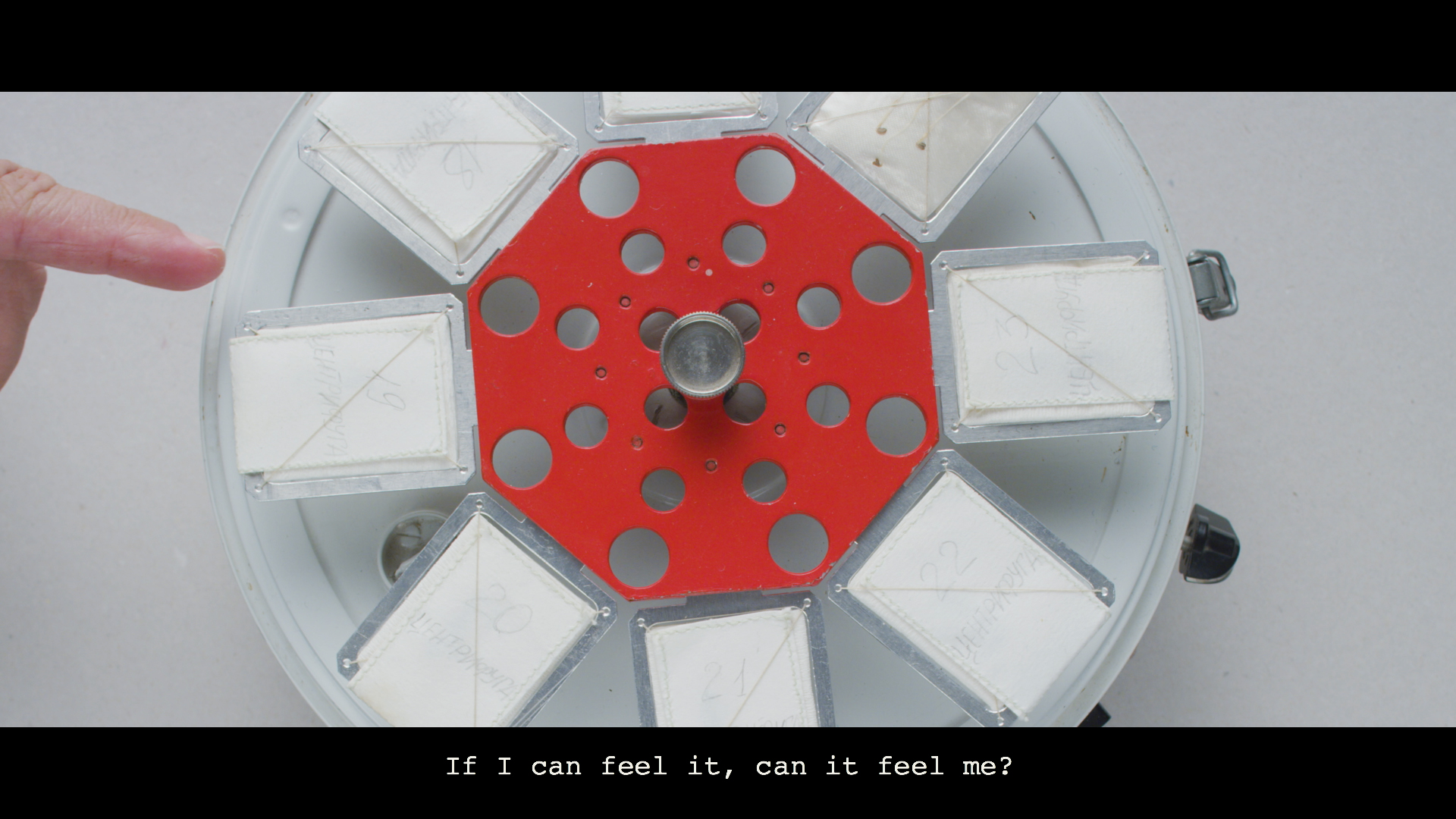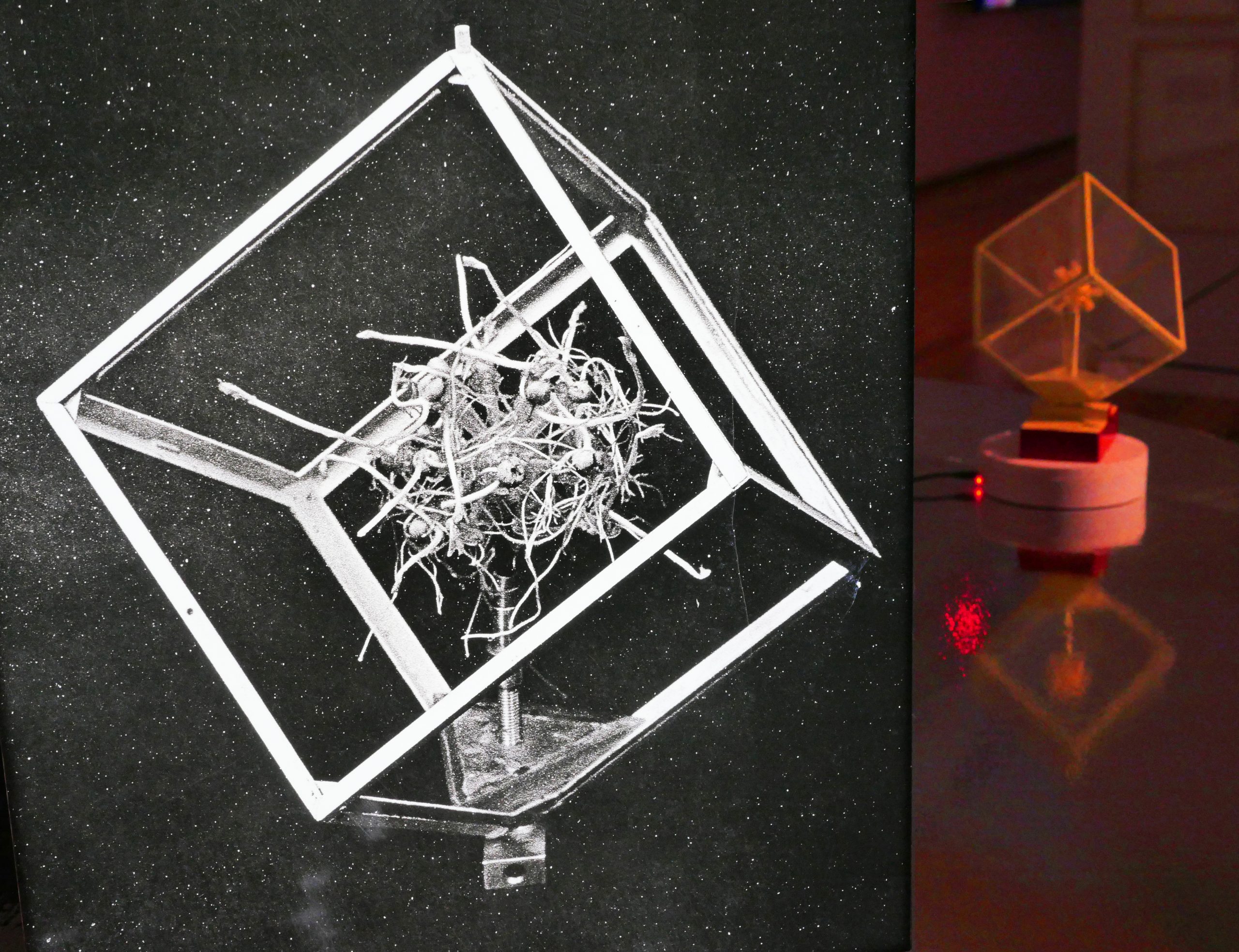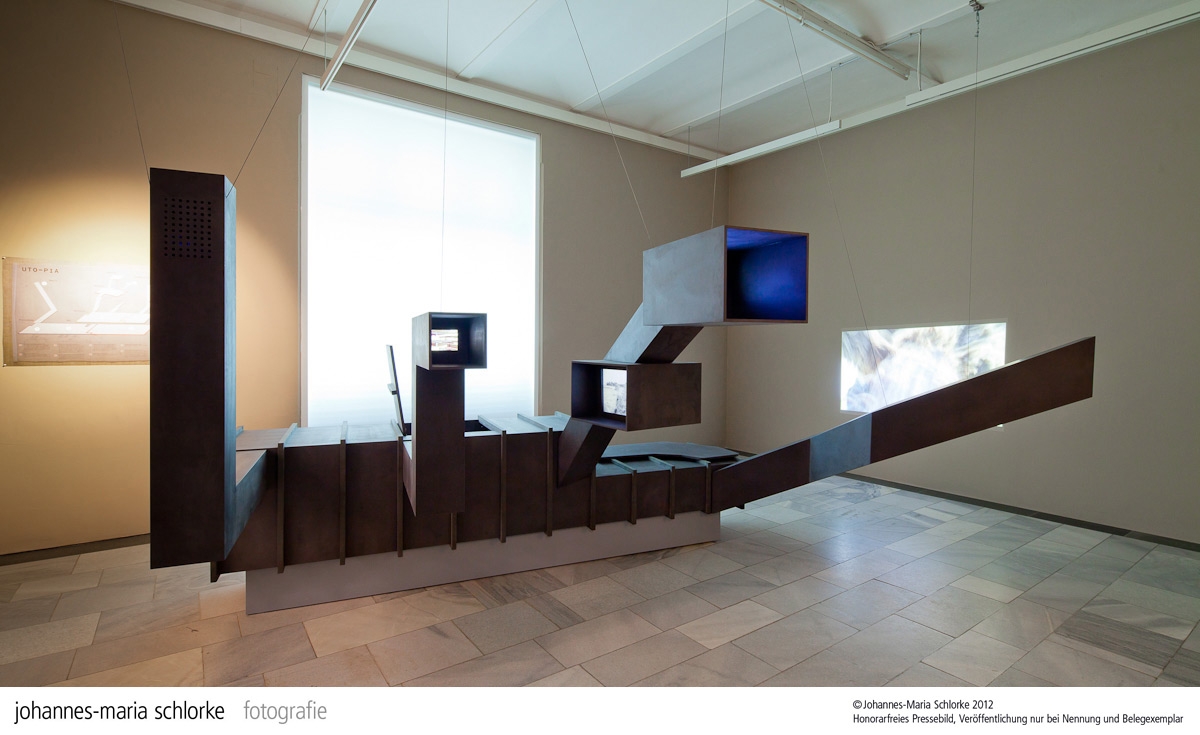TRANSmutation (2018-20) at We Never Sleep exhibition, curated by Cristina Ricupero and Alexandra Midal, at the Schirn Kunsthalle Frankfurt, is conceived as a media device that inquires the borders of double agency. Weaving and collating the layers of Cold war biowarfare spy films, photo documents from the classified space botany experiments, custom designed instruments for bio-experimentation in space missions, and fiction writing on human-algae hybridization, the project constructs a multifaceted, associative and visual interface. It engages with a Pharmakon and double agency of a design in scientific inquiry and its role in shaping life forms.
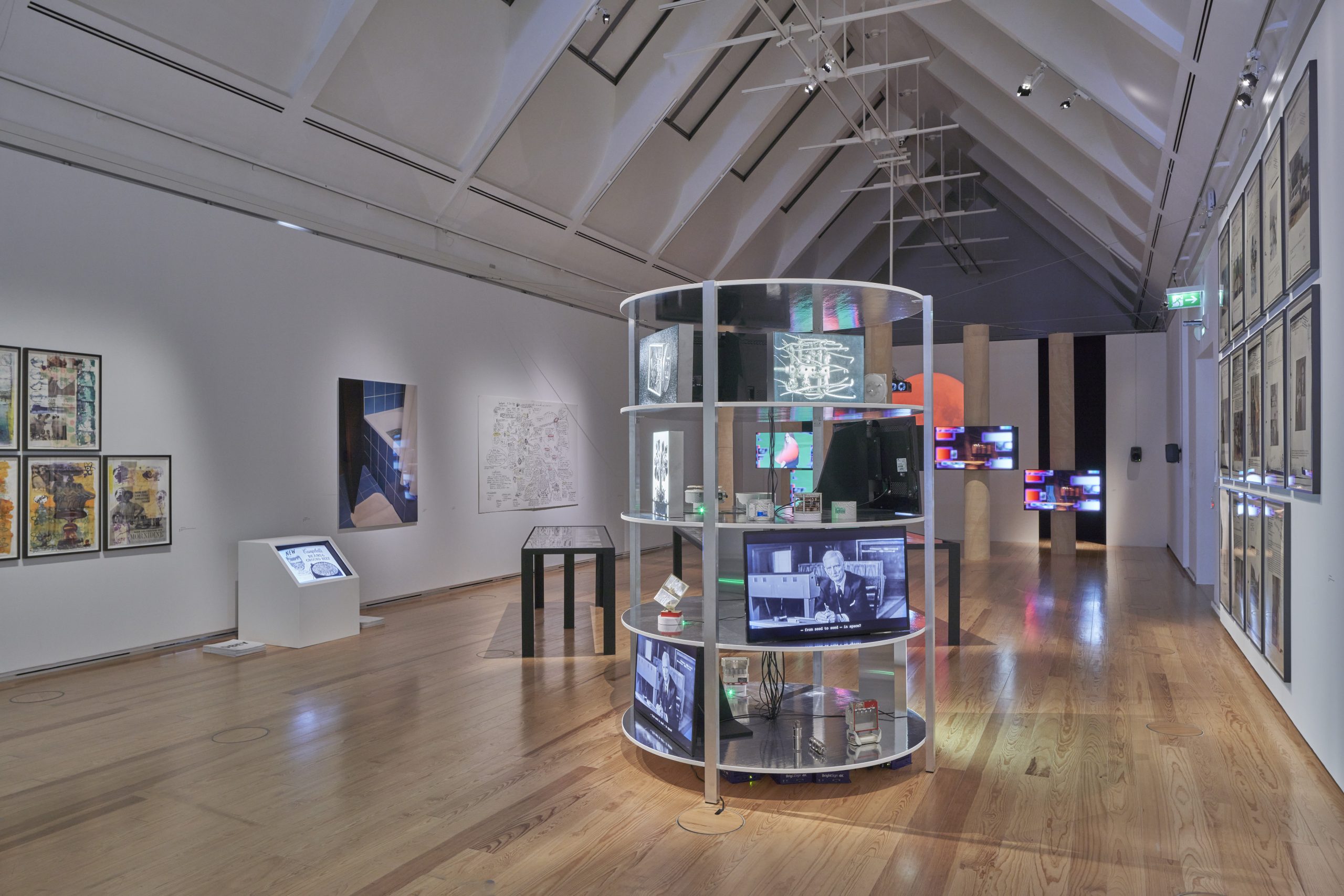
TRANSmutation (2018-20). Mixed media installation: 4 channel video (9:45), lightboxes, rotating space planters; dimensions variable. Courtesy of the artists, with participation of the Lithuanian Museum of Ethnocosmology and The Nature Research Centre Lithuania.
Film script and editing in collaboration with Gabrielė Urbonaitė, camera: pvz.lt, archival footage: Department of Image and Sound Documents at the Lithuanian Central State Archive
Special thanks to: Irma Balčiūnienė, Linas Šmigelskas (Lithuanian Museum of Ethnocosmology); Dr. Sigita Jurkonienė, Prof.dr. Sigitas Podėnas (The Nature Research Centre); Dr. Vladas Lašas (UPS Lietuva), Rudolfas Levulis, Paulius Mazūras (pvz.lt)

“I was asked to say a few words before this picture. This is unusual for me because people in my profession are used to listen more and talk less.
Few people know that, in 1982 Soviets made history when they grew Arabidopsis plant in Salyut 7 space station. It answered one of the most pressing questions raised by the biologists at the time: Can plants go through their full development cycle—from seed to seed—in space? My fellow Americans attempted to find the answer, but Soviets were first. There was a scientist somewhere in the Republic of Lithuania who together with his team designed first space planters and experimented with growth in microgravity conditions. Arabidopsis became the first plant to flower and produce seeds in space. And I got to be there, to know it, in a way… You’ll see…”


Space planters:
A container for a plant growth in a simulated condition of zero gravity on Earth, 1974.
A model of a container for a plant growth in a simulated condition of zero gravity, 1974
Biogravistat, a centrifuge for plant growth in microgravity, 1979
Biogravistat-1M, a centrifuge for plant growth in space station, 1979
Fiton-2, a micro greenhouse for plant growth in cosmos, 1978
Fiton-3, a micro greenhouse for plant growth in cosmos, 1982
Neris-5, an automatic centrifuge for plant growth in microgravity, 1992
Neris-8, an automatic centrifuge for plant growth in microgravity, 1997
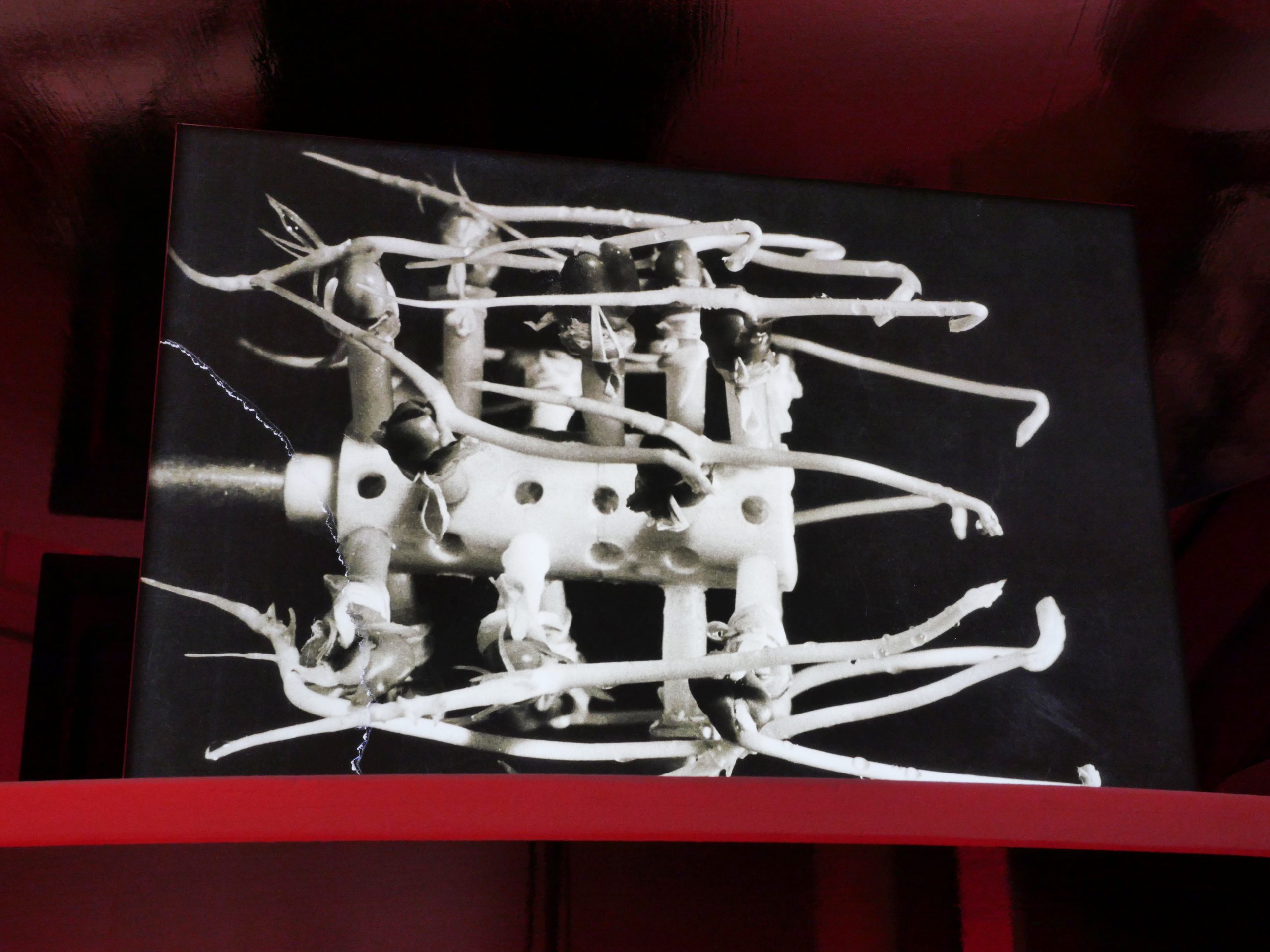



Photo documents:
Centrifuge-clinostat holder with bean shoots. Effects of artificial microgravity, 1972
Container for growing plants under variable gravity conditions, 1972-1974
Container for the study of plant growth and spatial orientation processes in space flight conditions. Soyuz 15 space flight, Salyut 3 space station, 1974.
Container for growing plants under variable gravity conditions. Salyut 4 space station, 1974-1975.
Sections of Arabidopsis thaliana Heinh. Material of the Fiton-3 experiment. Salyut 7 space station, 1982
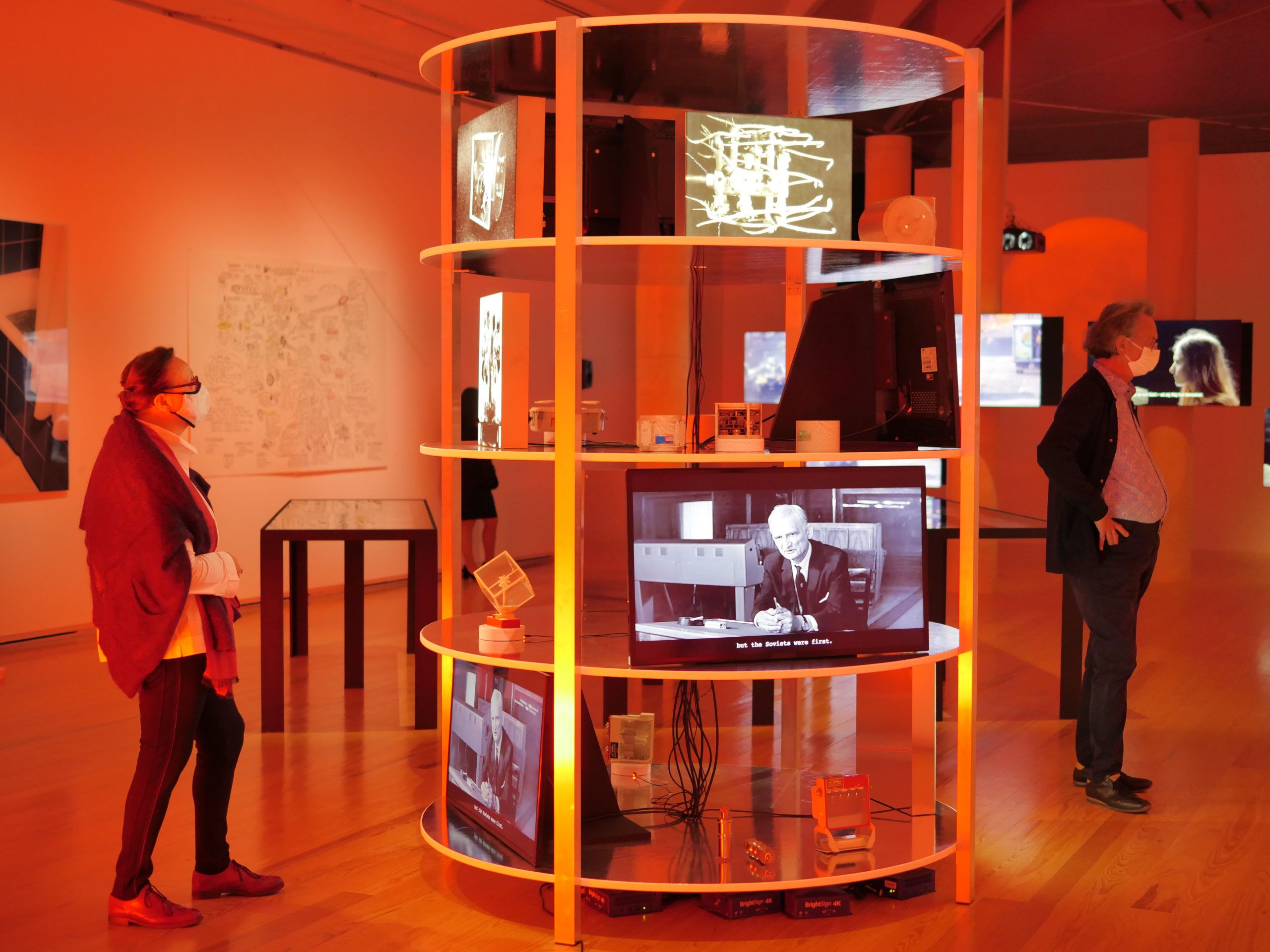
Film excerpts used:
Dead Season, dir. S.Kulish (Lenfilm, 1968)
The Flight of Mr.McKinley, dir. M.Schweitzer (Mosfilm, 1975)
Mirage, dir A.Brench (Riga Film Studio, 1986)
The Chase, dir. B. Gostiov (Mosfilm, 1987)



